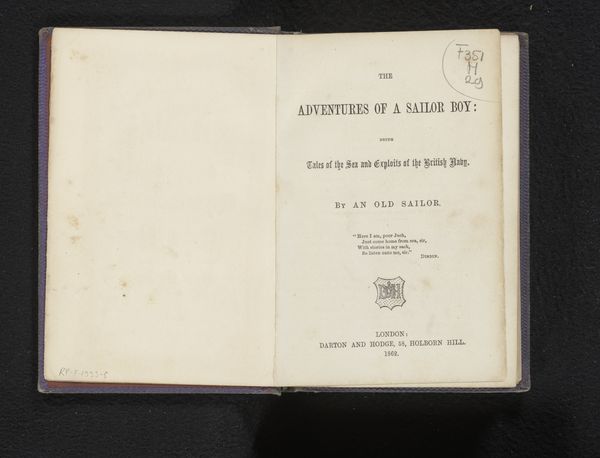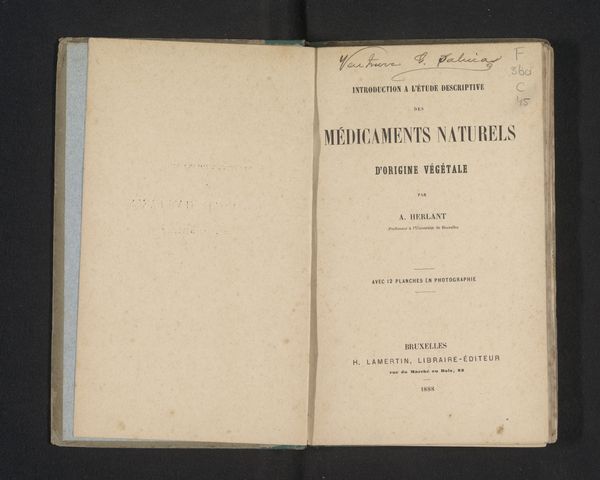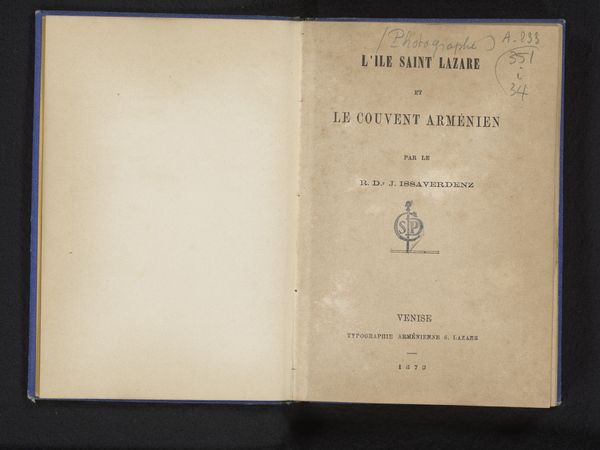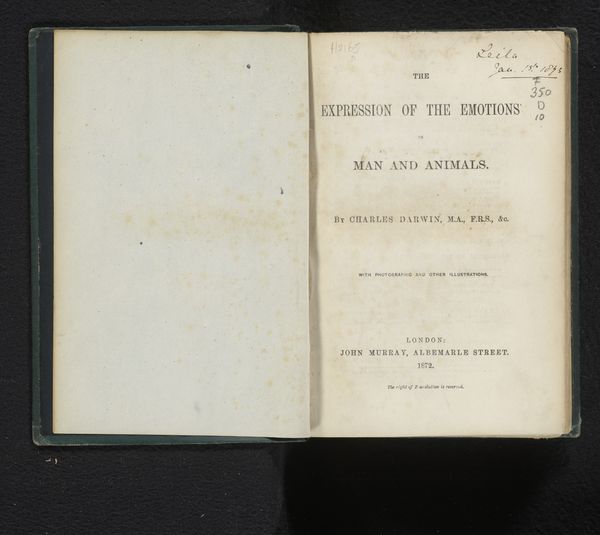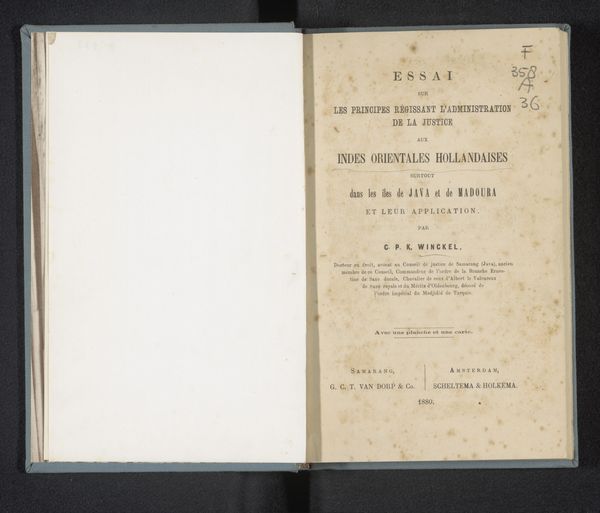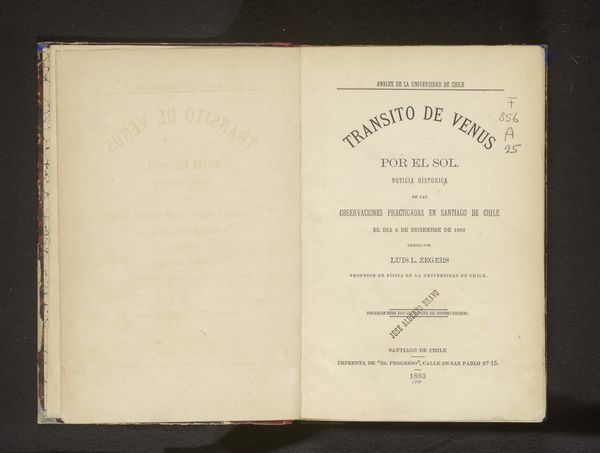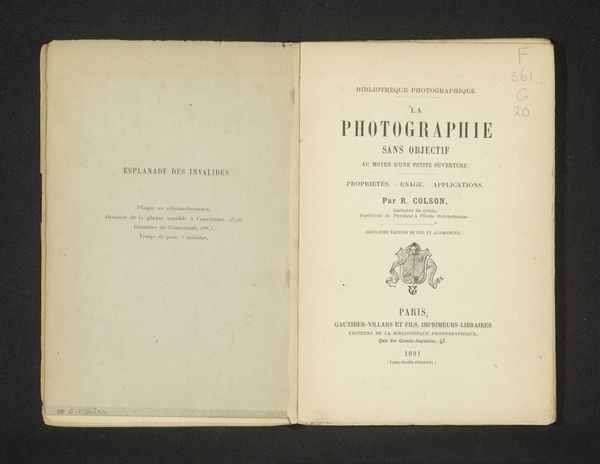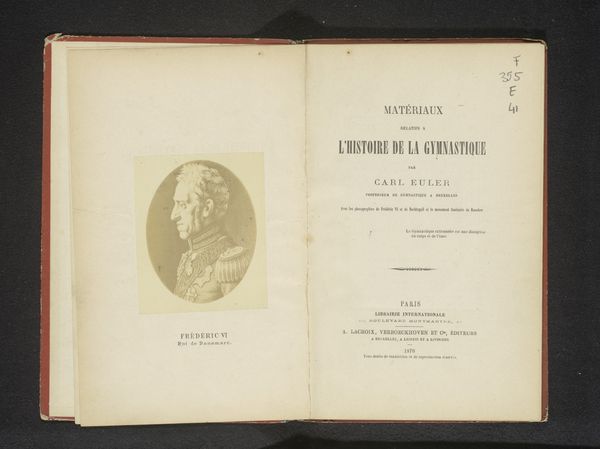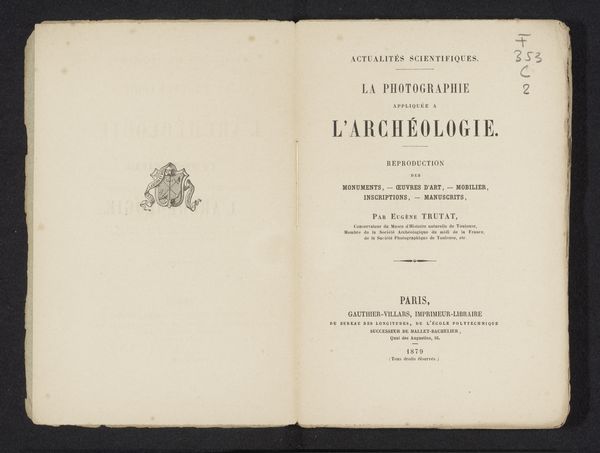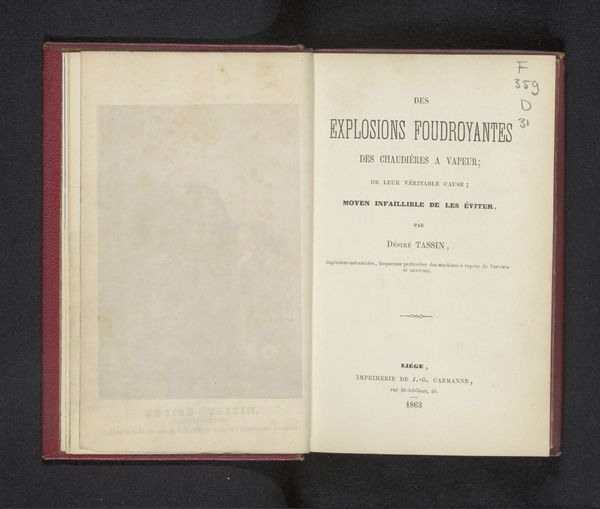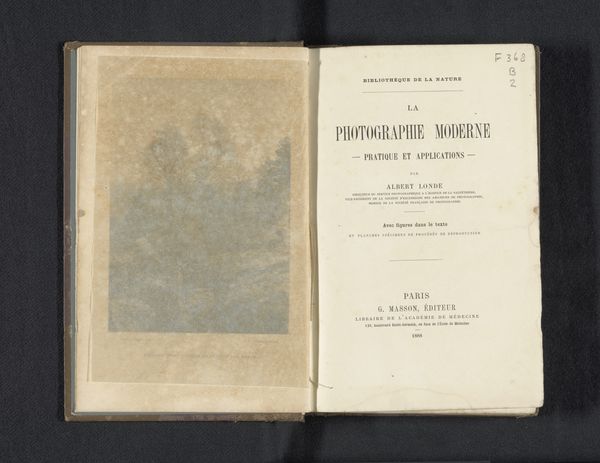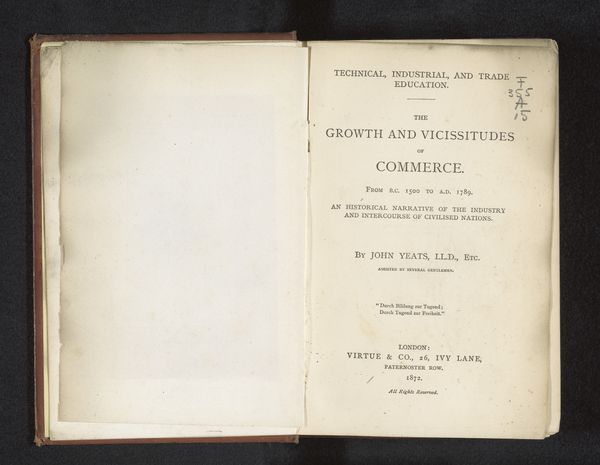
print, paper, typography
# print
#
book
#
paper
#
typography
Dimensions: height 237 mm, width 153 mm, thickness 5 mm
Copyright: Rijks Museum: Open Domain
Curator: At first glance, this open book seems quite somber and academic in its composition, almost like a study in contrasts between the pristine blank page on the left and the text-filled page on the right. Let's delve into this fascinating print titled "Tableaux anciens et modernes porcelaines et antiquites" from 1879 by E.J. Brill. Editor: I find it captivating how this simple object, ostensibly just paper and typography, whispers of a rich material culture long past, referencing the world of auction houses. I am wondering what sort of inks were employed in its printing, as well as how paper making innovations made such accessible broadsides and catalogues feasible. Curator: An astute observation. Semiotically, the typography speaks volumes. The title’s font choice communicates the value attributed to “anciens et modernes,” and signals sophistication of art appraisal. Consider, too, the hierarchy implicit in the typeset scale as the description progresses. It almost visually echoes the social stratification of the late 19th-century art world. Editor: The catalogue itself likely had to compete with other ephemeral advertisements posted in a visually dynamic public sphere. Printed pages like this one, once potentially displayed on walls or passed from hand to hand, now remind me that this catalogue may only remain now as a kind of "aura" for some lost antique or artwork. How the use value of objects wanes into memory is powerful. Curator: Precisely! Furthermore, note the spatial relationships—how the empty page becomes a visual pause, a moment for reflection before confronting the dense details on the other side. Its emptiness invites our speculation, and implicates us. It also creates balance in the work’s structure. Editor: Yes, that stark, bare page highlights just how tactile, material, and potentially luxurious this catalog was when it was created. Imagine its physical presence – the scent of the ink, the rustle of its turning pages during bidding at the auction. Curator: Ultimately, “Tableaux anciens et modernes porcelaines et antiquites” prompts a deeper contemplation of value, communication, and the visual languages embedded in commercial print, even beyond what's visibly recorded as a final sale. Editor: Reflecting on this simple, aged paper, one cannot help but consider the entire laborious process, the skilled craftsmen whose hands physically created a piece we appreciate anew.
Comments
No comments
Be the first to comment and join the conversation on the ultimate creative platform.
